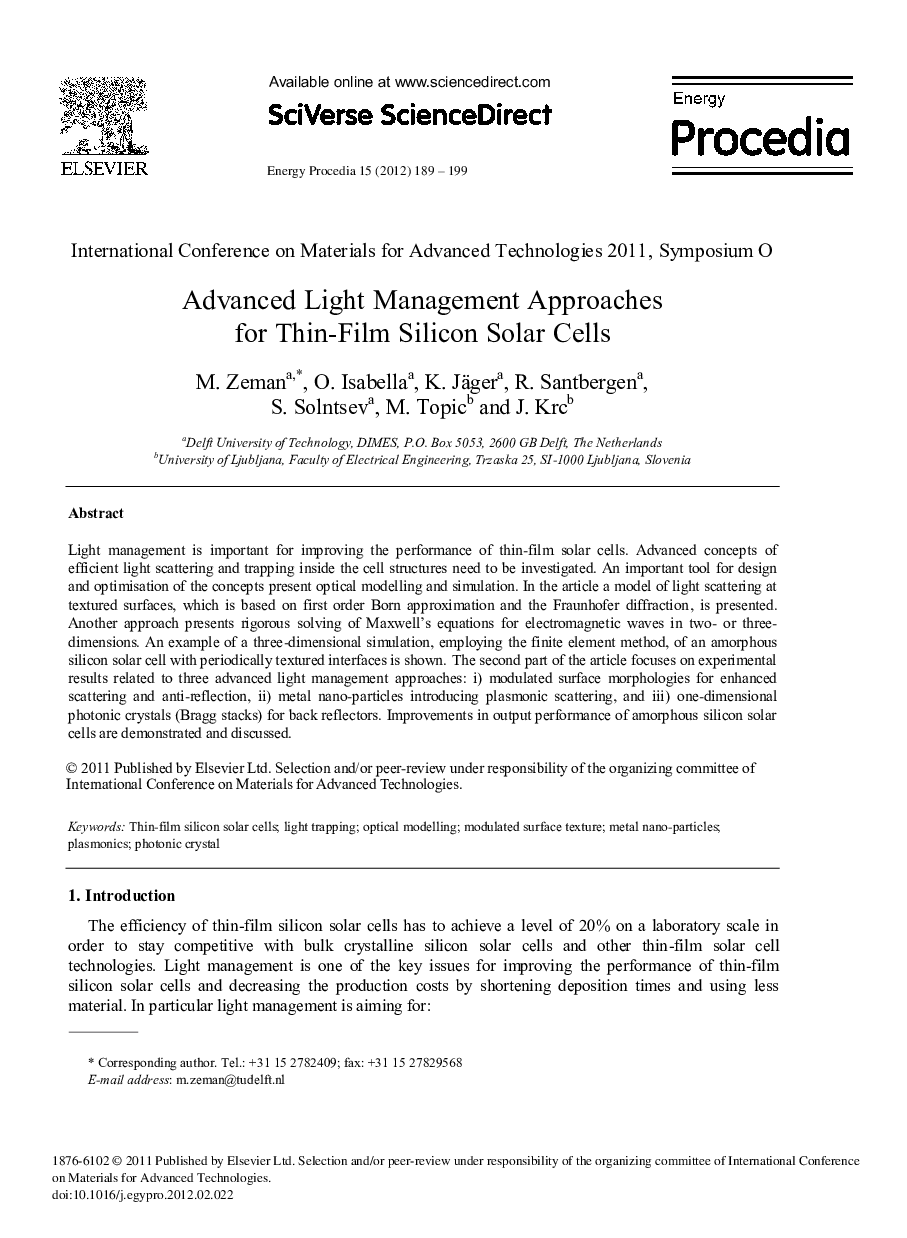| Article ID | Journal | Published Year | Pages | File Type |
|---|---|---|---|---|
| 1514061 | Energy Procedia | 2012 | 11 Pages |
Abstract
Light management is important for improving the performance of thin-film solar cells. Advanced concepts of efficient light scattering and trapping inside the cell structures need to be investigated. An important tool for design and optimisation of the concepts present optical modelling and simulation. In the article a model of light scattering at textured surfaces, which is based on first order Born approximation and the Fraunhofer diffraction, is presented. Another approach presents rigorous solving of Maxwell's equations for electromagnetic waves in two- or three-dimensions. An example of a three-dimensional simulation, employing the finite element method, of an amorphous silicon solar cell with periodically textured interfaces is shown. The second part of the article focuses on experimental results related to three advanced light management approaches: i) modulated surface morphologies for enhanced scattering and anti-reflection, ii) metal nano-particles introducing plasmonic scattering, and iii) one-dimensional photonic crystals (Bragg stacks) for back reflectors. Improvements in output performance of amorphous silicon solar cells are demonstrated and discussed.
Keywords
Related Topics
Physical Sciences and Engineering
Energy
Energy (General)
Authors
M. Zeman, O. Isabella, K. Jäger, R. Santbergen, S. Solntsev, M. Topic, J. Krc,
